Good morning! This is The Zero to One. Equipping you with the best tools, resources, and actionable tactics to take your startup to the moon.
Here’s what’s in store for you today:
Deep dive of Million Dollar Weekend’s launch, Noah Kagan’s #1 bestselling book on taking action to launch a successful business.

Million Dollar Weekend (MDW): The launch strategy that led it to #1 on Amazon
I’m doing something a little different this week. Rather than deep-diving a startup, I’m looking into the launch of Noah Kagan’s new book, Million Dollar Weekend - what worked, what didn’t, and what you can learn from it for your GTM strategy.
Noah and his team have given me a behind-the-scenes look into their launch strategy - which has been super interesting! Shoutout to Noah and Jay who answered any questions I had and helped set this all up!
Here is what I’ve learned from it and how you can implement the ideas Noah used into your business (or book if you’re writing one).
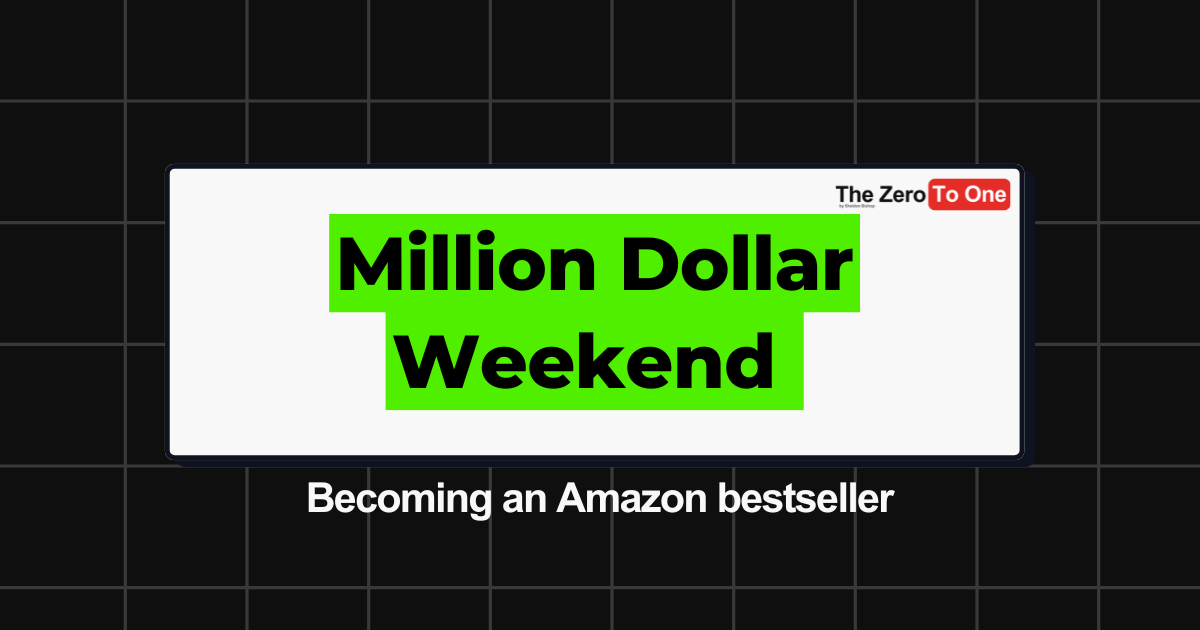
I hope you enjoy!
This is the story of how Million Dollar Weekend went from Zero to #1 Bestseller. 🚀
Launch Strategy Summary
Noah’s launch strategy for Million Dollar Weekend started long before he even started writing the book.
The reality is that this book was 15+ years in the making.
People rarely buy business books to learn from people who haven’t done it before. They don’t buy books with no credibility.
So the story of MDW’s launch success is in many ways a reflection of Noah’s success - from his times at Facebook and Mint, and more importantly, him building AppSumo to a soon-to-be $100M revenue business (which he tested in a weekend - living by what he says) and growing a massive online following.
Noah had put the time in. Learned valuable skills. Consistently proved them.
And now he’s sharing what he’s learned.
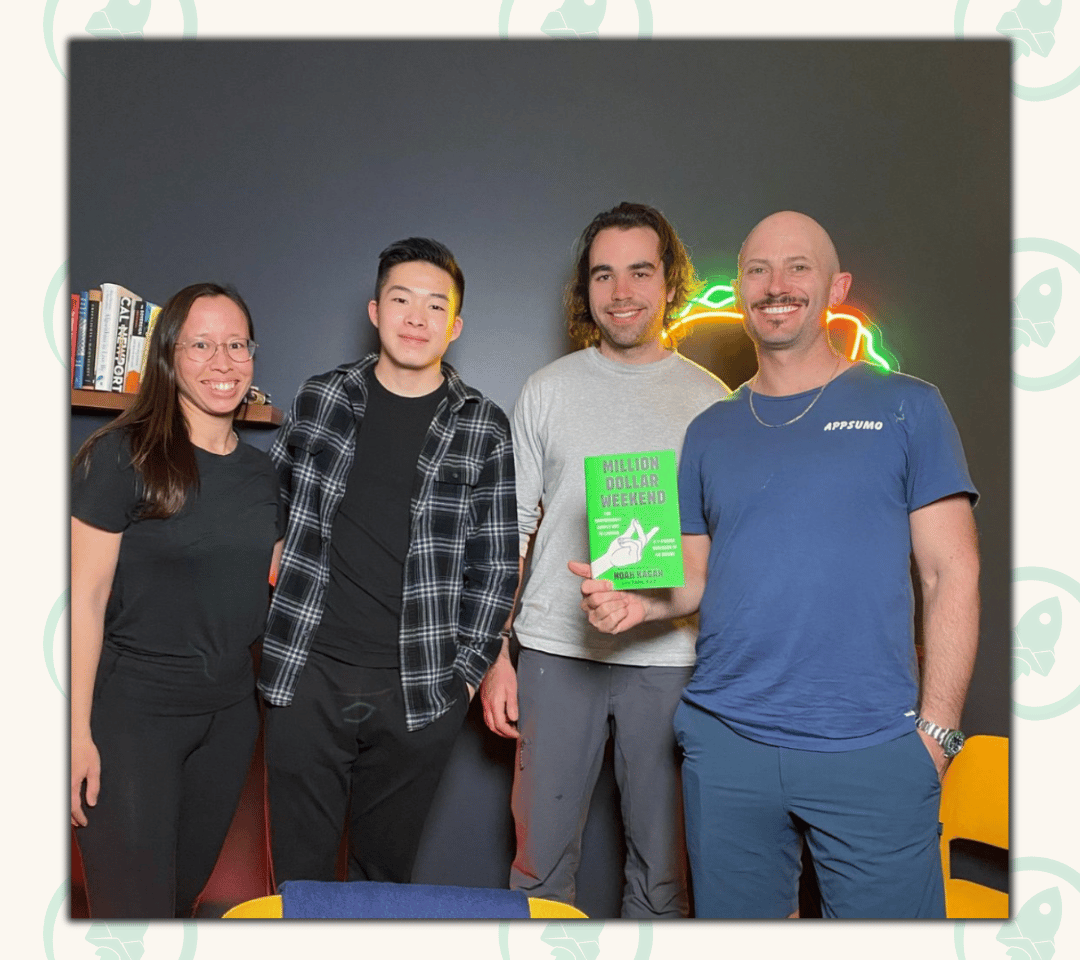
But let’s bring this back to the present - when Noah decided to write a book. (Okay this isn’t quite the present, but you know what I mean).
Noah thought for him to write the best book, he needed to speak to those who had written bestsellers before him - Tim Ferriss, Ramit Sethi, and James Clear, to name a few.
One key thing he learned from James Clear, author of Atomic Habits, was to plan your marketing far in advance.
So that’s exactly what Noah did.
He started working on the launch 18 months before the release date.
He created a single source of truth spreadsheet to coordinate the launch:
Podcasts 🎙️
Content 📹
Bulk buys 💰
And much much more
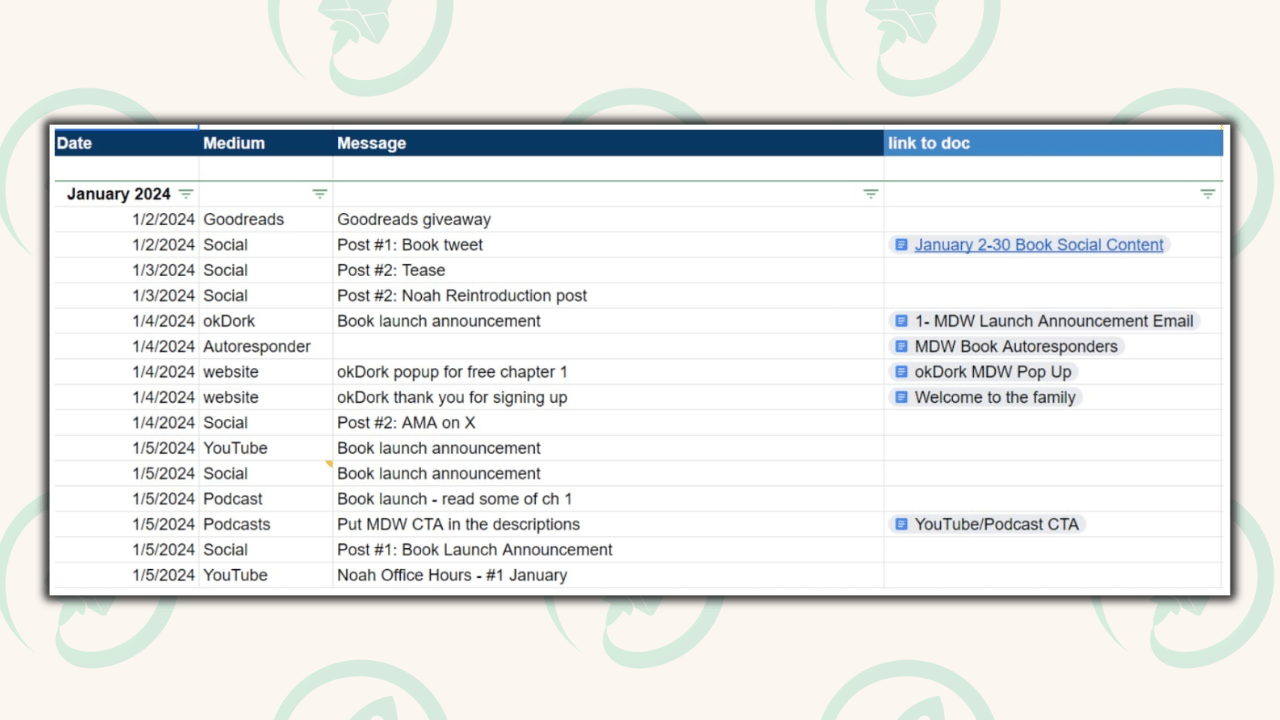
Noah and his team planned content for every single day - to coordinate a huge marketing effort centered around content and leveraging Noah’s following.
Noah and his team tested a LOT of different launch tactics, too many to give each the time they deserve, so I’ve grouped them into what I saw as the most important key principles they used in multiple tactics - before pulling out specific tactics that worked that you can use in your GTM strategy.
Key Principles
🌏 1. Being everywhere: A key component to the success of the MDW launch was the number of touchpoints people had with Noah and the book. Noah was everywhere when it launched. Posting multiple times per day on every platform. And appearing on what felt like every single podcast I listen to. You couldn’t avoid Noah if you were interested in entrepreneurship.
💑 2. Creating a personal connection: One of the most important factors in being memorable and creating a connection with your audience is to be vulnerable and tell personal stories. Noah made sure to let his personality shine through in his content and the launch strategy, ultimately driving more true fans and sales.
📲 3. Testing and doubling down: Noah and his team spent months learning from leading authors to plan their launch strategy. Creating a long list of ideas to try and test what worked best and double down on it.
🌏 1. Being everywhere
I don’t know about you. But Noah has been everywhere I’ve looked for the past few months.
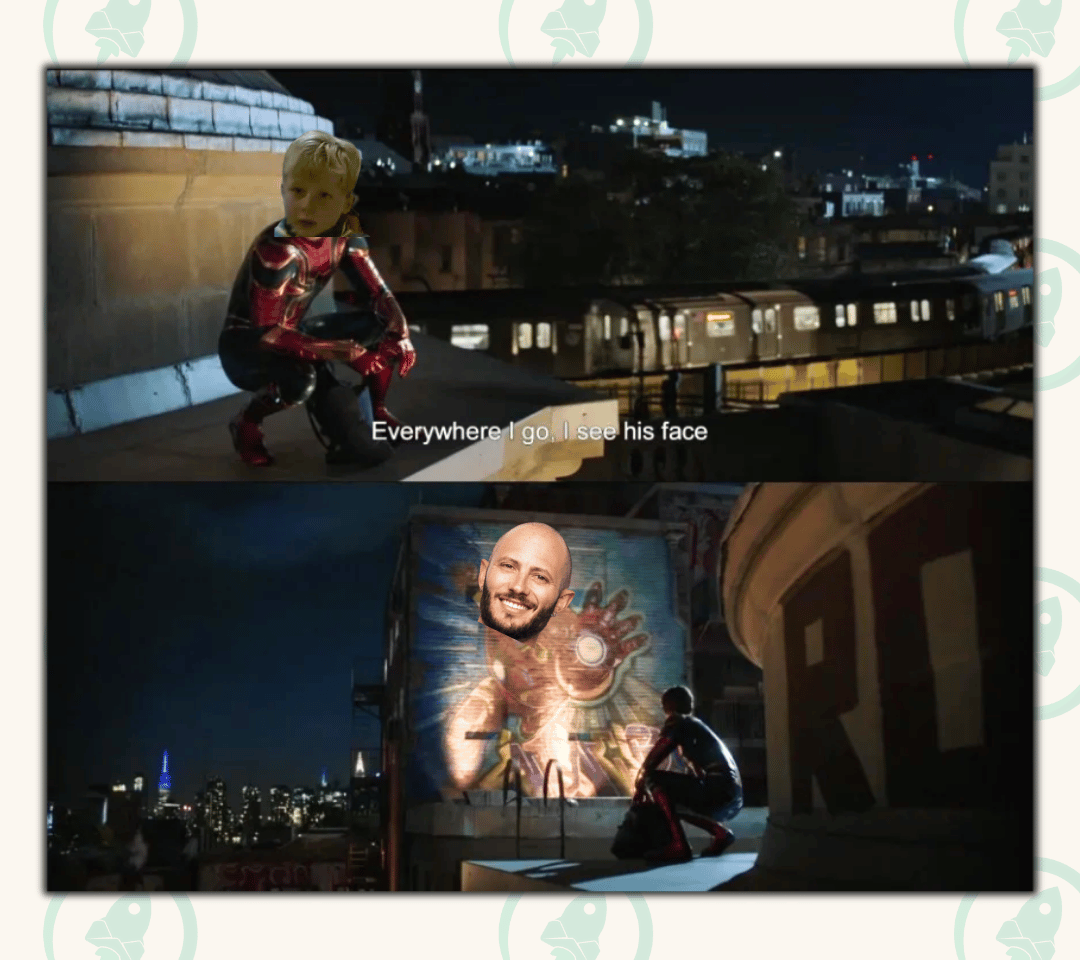
The first place I noticed this was with my go-to podcasts.
It felt like in the span of a few weeks Noah had made an appearance on every single one of them.
My First Million (my favorite listen always). Deep Dive with Ali Abdaal. Tim Ferriss. Leveling Up with Eric Siu. Mark Manson. Chris Williamson. Honestly, I could go on forever with just his podcast appearances - there were over 80.
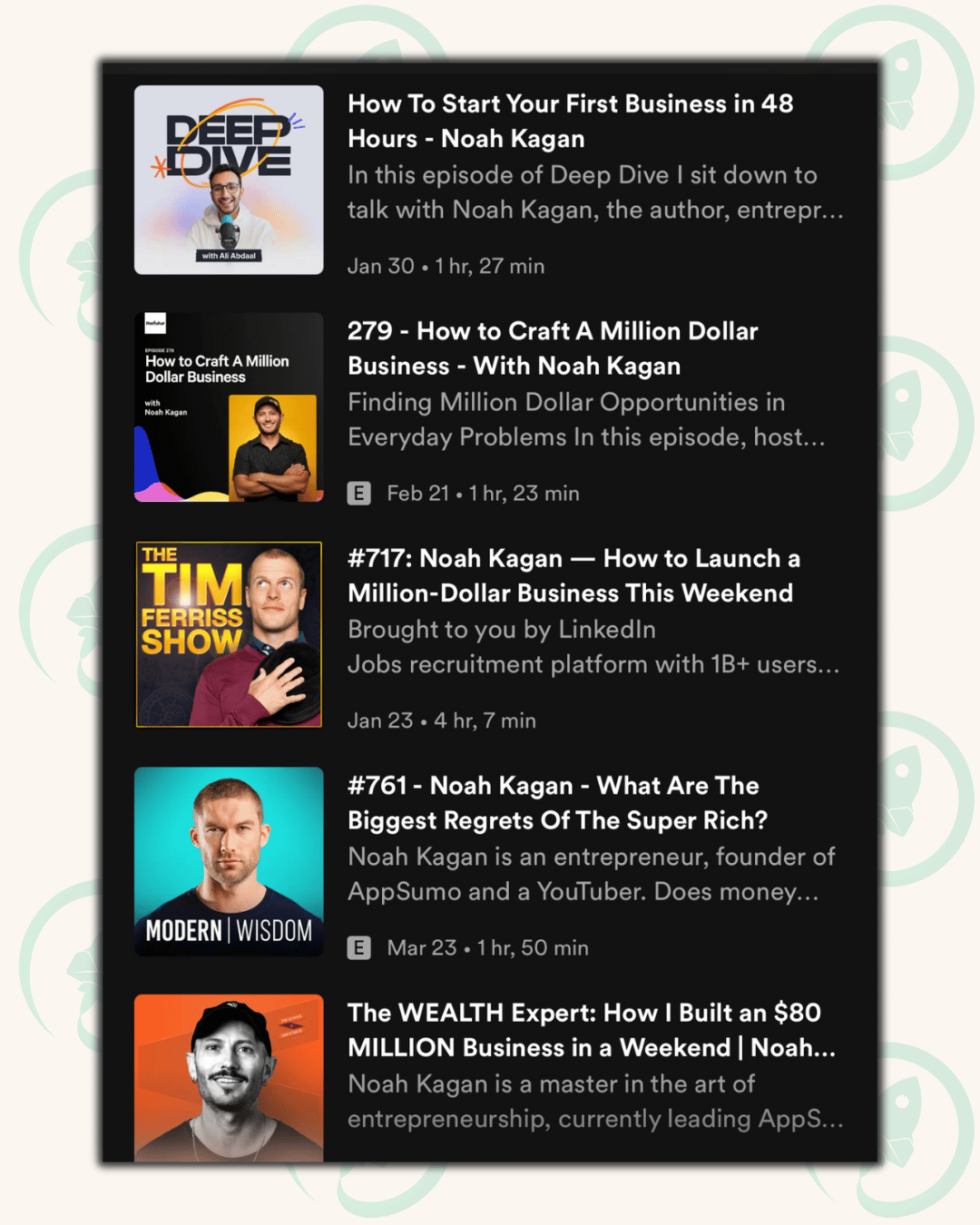
Interestingly, Noah and his team found that in terms of direct traffic, smaller podcasts didn’t really move the needle - even when combined.
But this doesn’t mean if you aren’t on Tim Ferriss it’s not valuable.
Smaller podcasts can be great for practice and to get you into the rhythm of telling your story.
While also increasing the potential touchpoints for people to interact with you.
And also potentially opening up doors to other podcasts - ask every podcast host you go on, to put you in touch with one other podcast. This will build momentum and credibility (especially if you are less known).
Going on all these podcasts helped Noah keep MDW top of mind for his target audience and increase the number of interactions with them.
The more touch points = the higher chance someone will buy MDW.
But Noah didn’t stop at podcasts.
He posted multiple times per day on all his social medias - Twitter/X, LinkedIn, Instagram, and YouTube (including the Community section).
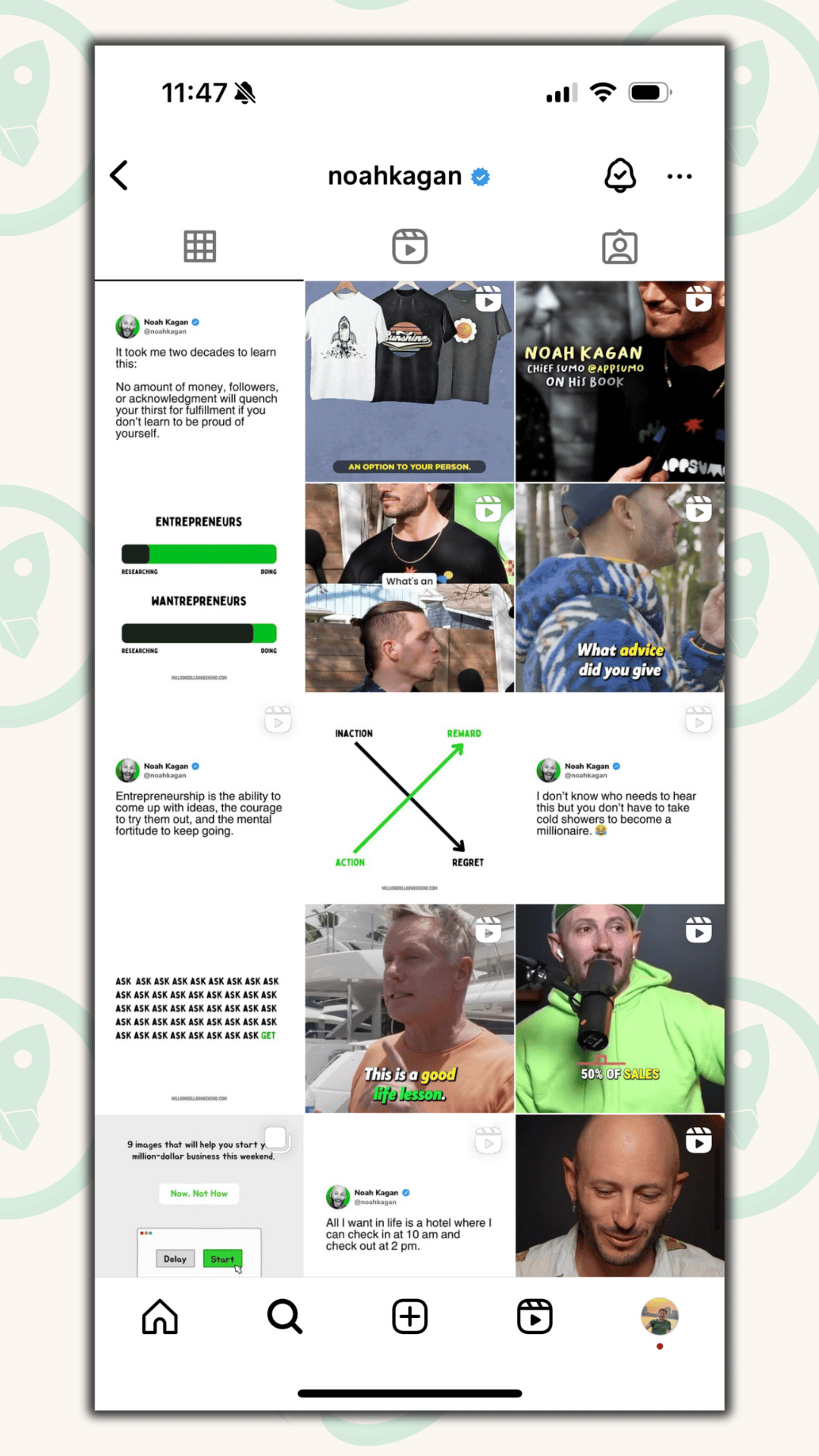
As well as hosting AMAs (Ask me anything) on different subreddits like r/GrowMyBusiness, r/GrowthHacking, r/Startups, and getting over 100k views for his AMA on r/entrepreneur.
These AMAs were awesome. Not only exposing him to a new audience. But also building personal connections with people - talking about building connections with followers…
💑 2. Creating a personal connection
One thing that worked really well for not only engagement but also sales was Noah building a genuine connection with his audience.
But how did he actually build this connection?
The first way was to be more vulnerable with his followers, telling personal stories and anecdotes in his emails. These worked really well for driving sales, as well as shares.
He then carried this over to Twitter and LinkedIn, telling personal stories, often accompanied with pictures - like before and after growth stories (again very personal).
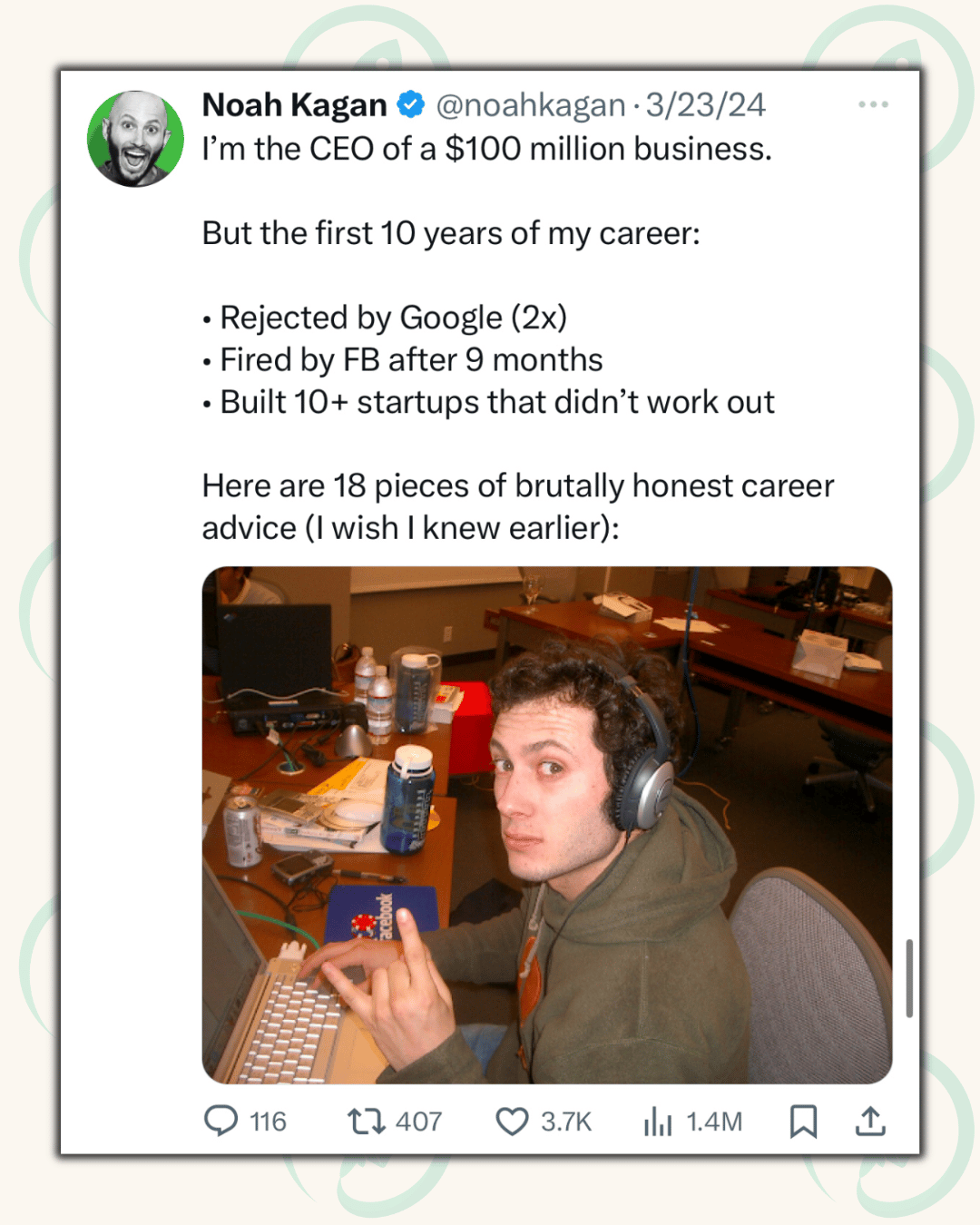
As mentioned above, another way Noah built this connection was through Reddit AMAs. This was a great way to give valuable insights to not only his fans but also a new audience. And Noah was super responsive - replying to every question, including one of mine!
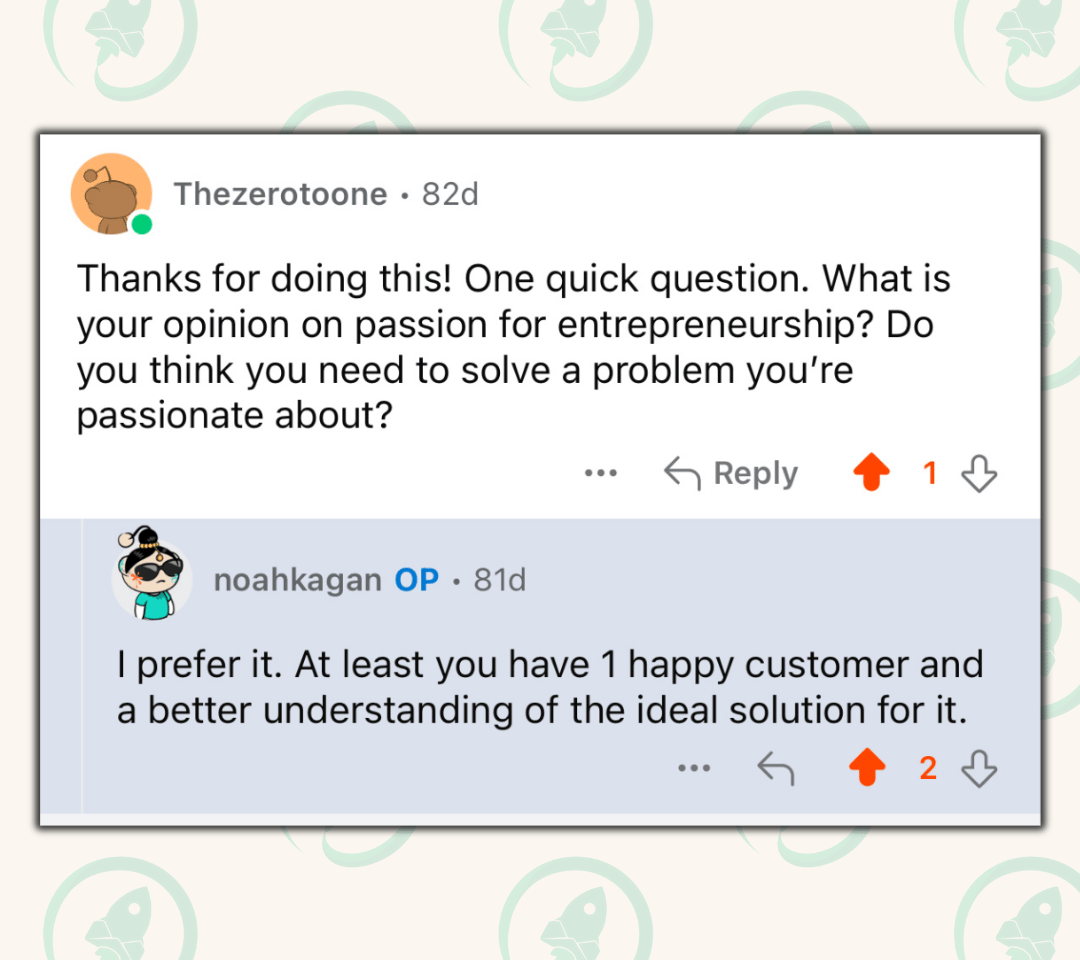
These were super helpful in building trust - people felt super engaged with Noah and whenever he answered a question, he immediately became more legit and likable to them.
Another way Noah and his team built this connection with his audience was by bringing them along the journey with him.
People want to feel a part of something unique.
And so Noah gave them that.
Inviting his email subscribers to an exclusive virtual launch party. The email for this had one of the highest open rates for the whole launch.

One of the other ways Noah built this connection was to create in-person experiences with his fans, such as giving them a chance to fly out and meet Noah. This got people excited about buying MDW and helped spread the book on social media with a sweepstakes to win the prize.
But building this personal connection didn’t start at the launch.
When writing the book, his co-author Tahl Raz pushed him to be more vulnerable in his writing - telling personal stories he hadn’t shared before. This strengthened the relationship between Noah and his audience.
Once people read a personal story of Noah’s in an email and then purchased the book - this connection they felt would deepen from Noah’s vulnerability. And the reader would be more likely to share the book with someone else - or on social media.
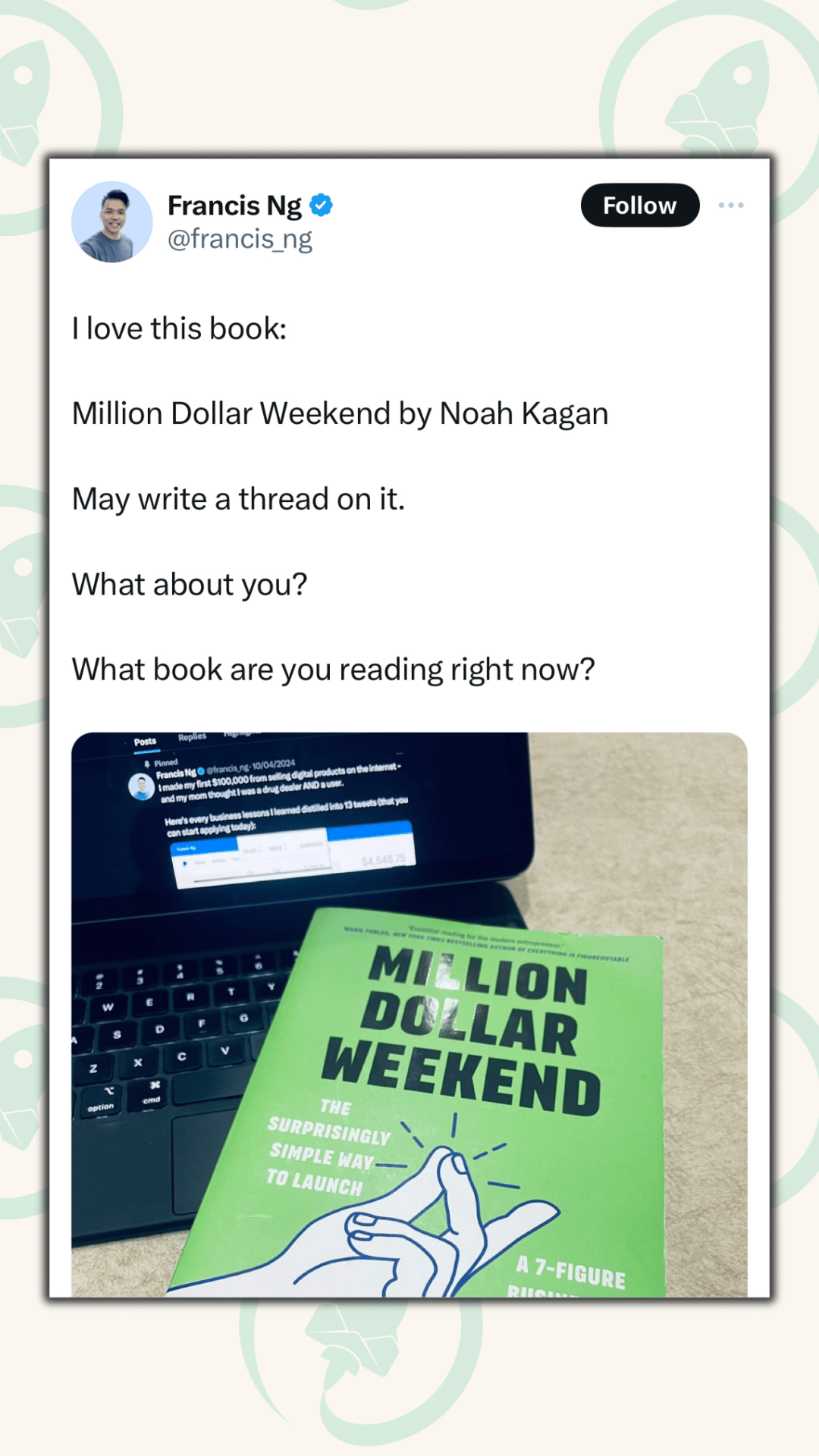
Noah has spent years building an audience of followers interested in entrepreneurship. For this launch, he focused on developing a more personal connection with these followers, being open and vulnerable by sharing personal stories.
📲 3. Testing and doubling down
Getting a behind-the-scenes look into the launch strategy of MDW one thing immediately stood out to me.
Noah and his team tested a ton of different ideas.
From social media posts and giveaways, to email marketing, Instagram DMs, in-person experiences, MDW Cohorts, podcasts, live YouTube Q&As, AppSumo promotions, and much more.
And it wasn’t just the channels they tested. But the formats and little details as well.
Things like adding a link to the first Tweet vs subsequent tweets (rather add them later in the thread). Or testing whether videos of Noah talking did better than videos of other people talking more (in podcasts for example).
Everything seemed intentional and everything was tracked.
With the team noting things that worked, things that didn’t work, and new things to try.
And it didn’t stop here.
Once they found something that worked - they doubled down on it.
Finding any edge they could to promote MDW.
Testing wasn’t limited to their content strategy only.
Noah was super intentional about testing both the book itself and its packaging.
One piece of advice I often give to startups is to build WITH your customers.
And Noah did exactly this with MDW. He had ~1000 people read the first draft to give him feedback on what he was missing and where he needed to double down.
Through this, he tested the content of his book with his target audience before even releasing it.
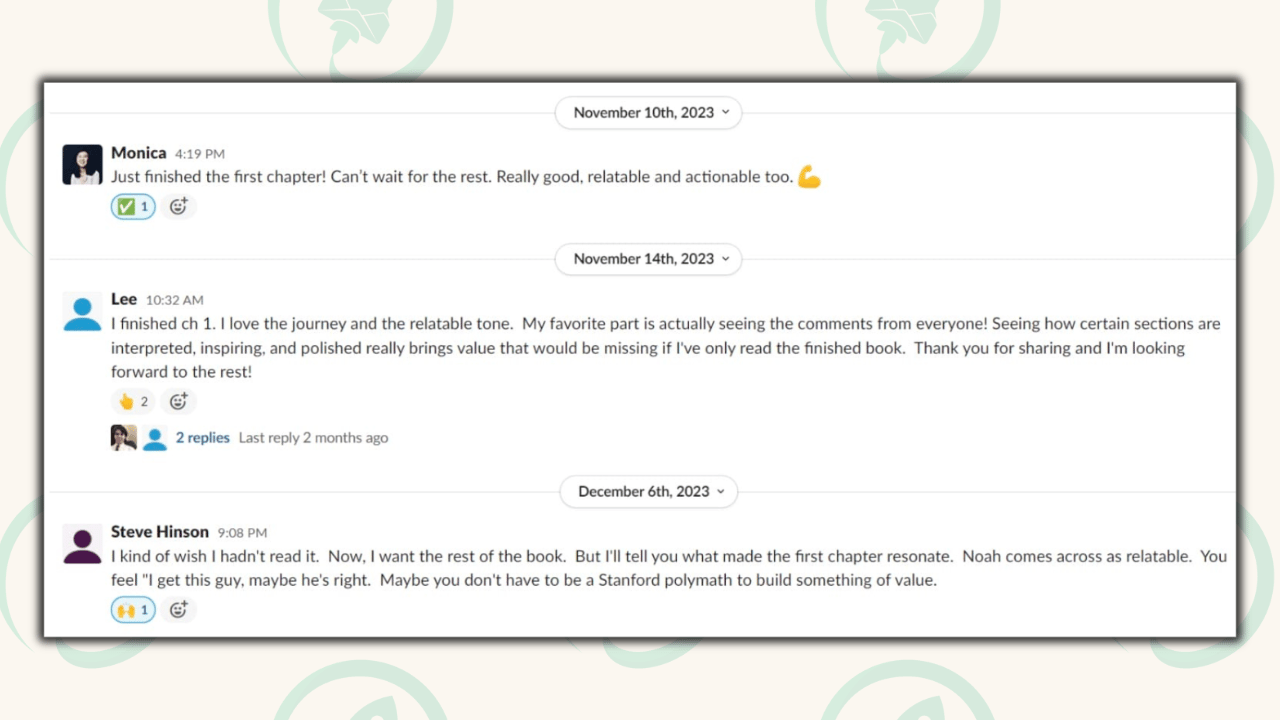
One of the coolest things I learned about the MDW process was just how detailed they were with the packaging of the book.
Noah wrote an awesome article about it here - I highly recommend giving it a read.
But to summarize what they did:
They set up Facebook Ads campaigns in affordable countries to test which covers performed the best out of a few options - The snapping finger graphic being one of them.
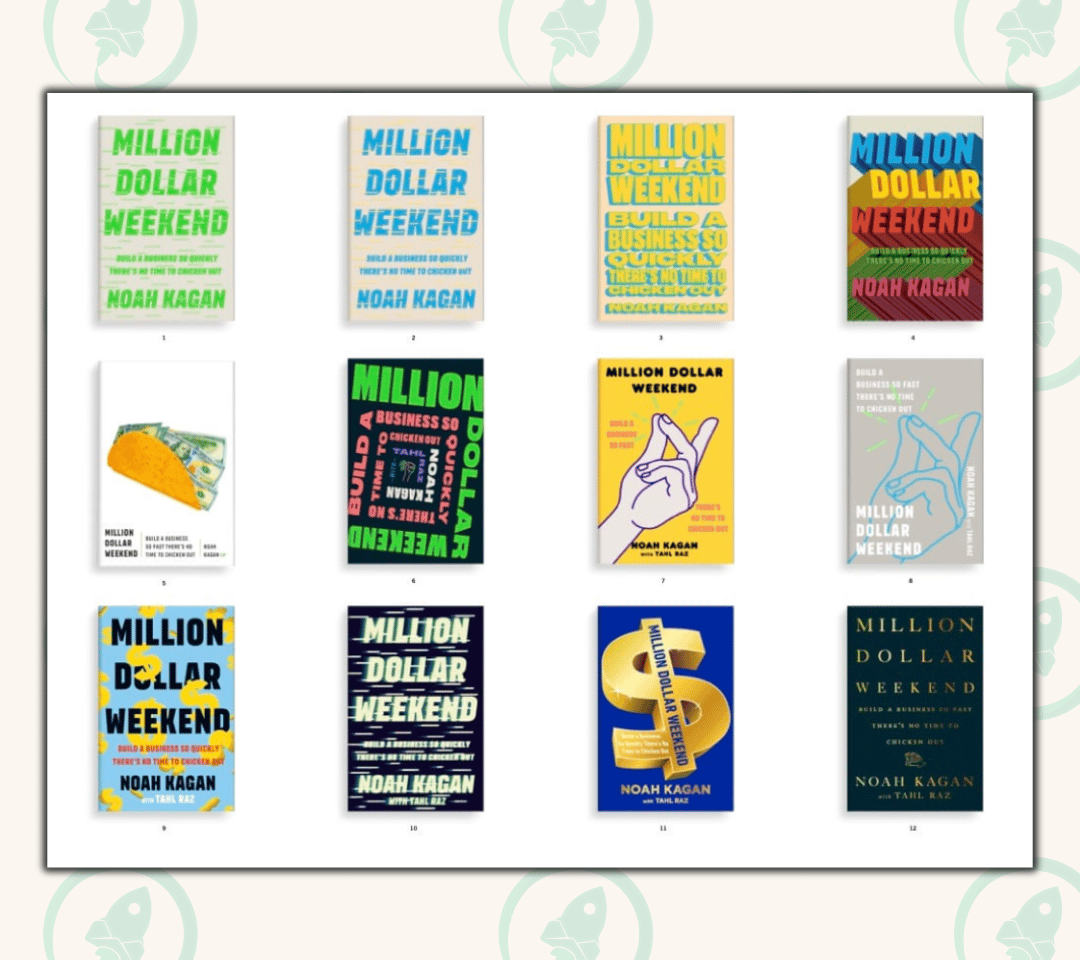
They then tested the covers with the top results against each other in five more iterations and the snapping fingers won.
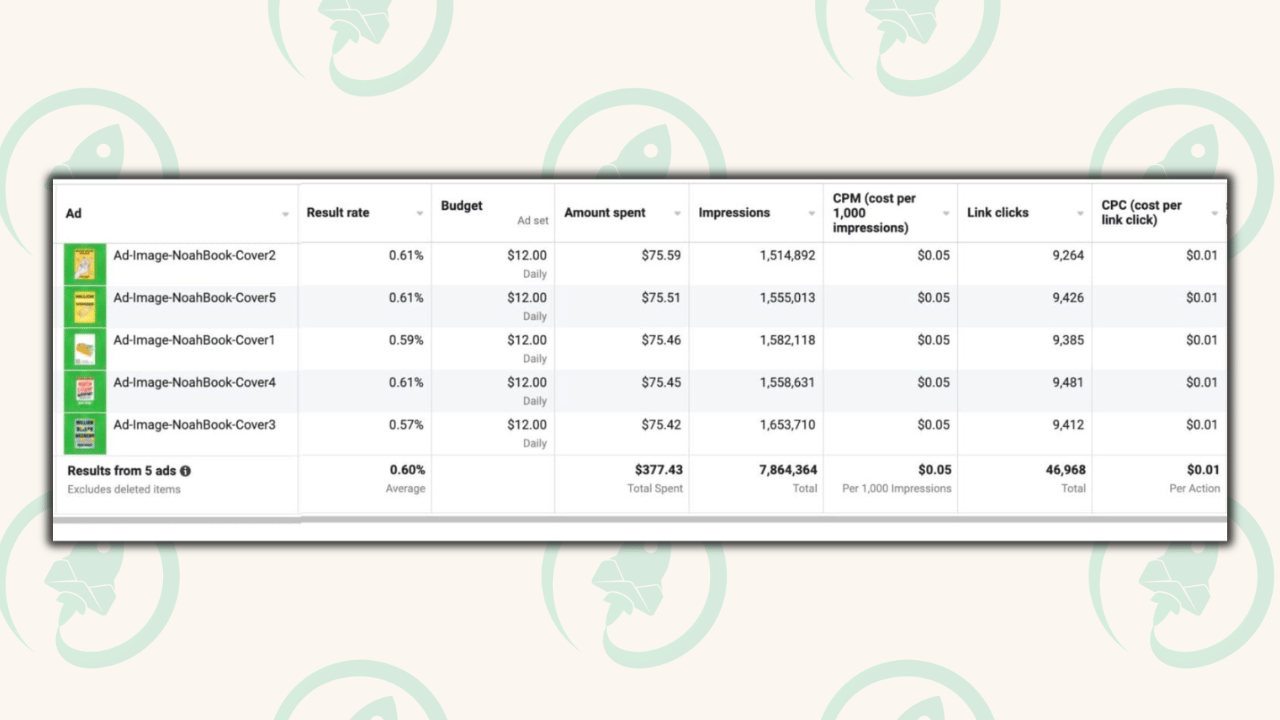
After this, the team wanted to test the subtitle.
So they put out polls on Twitter, YouTube community, and his newsletter - there was a clear winner:
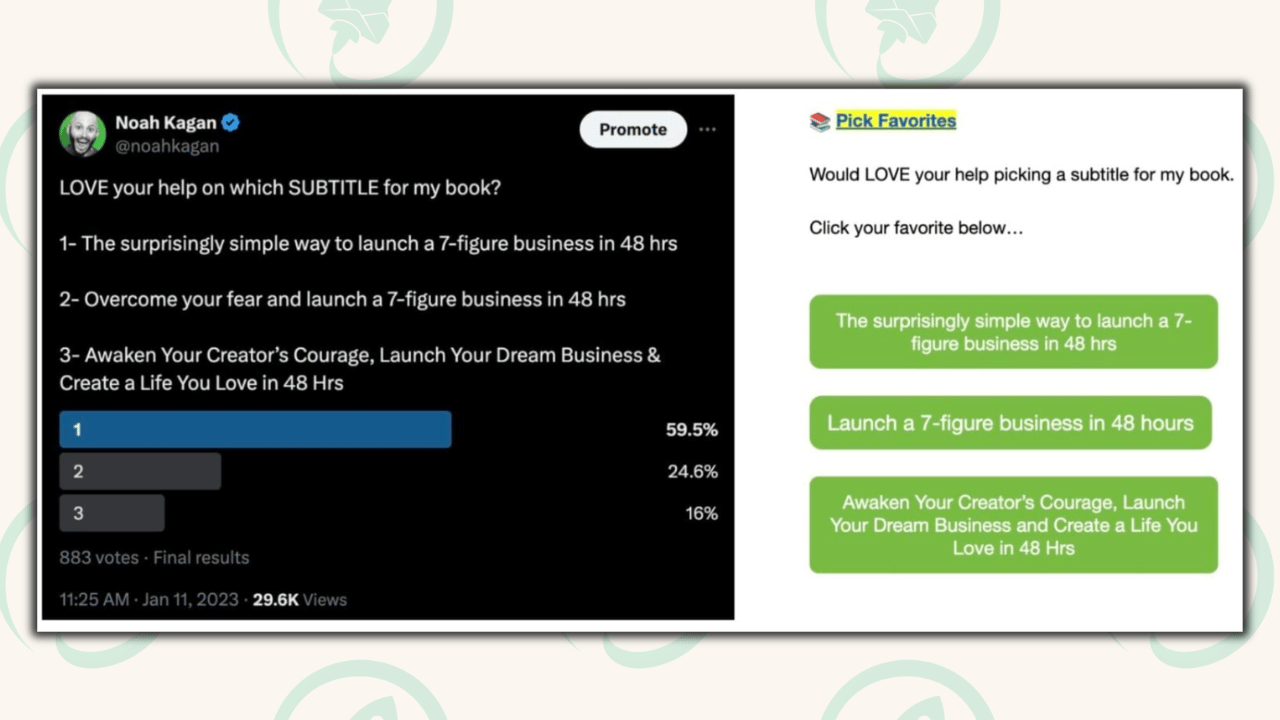
Then came the color of the book - they repeated the Facebook ads strategy from above.
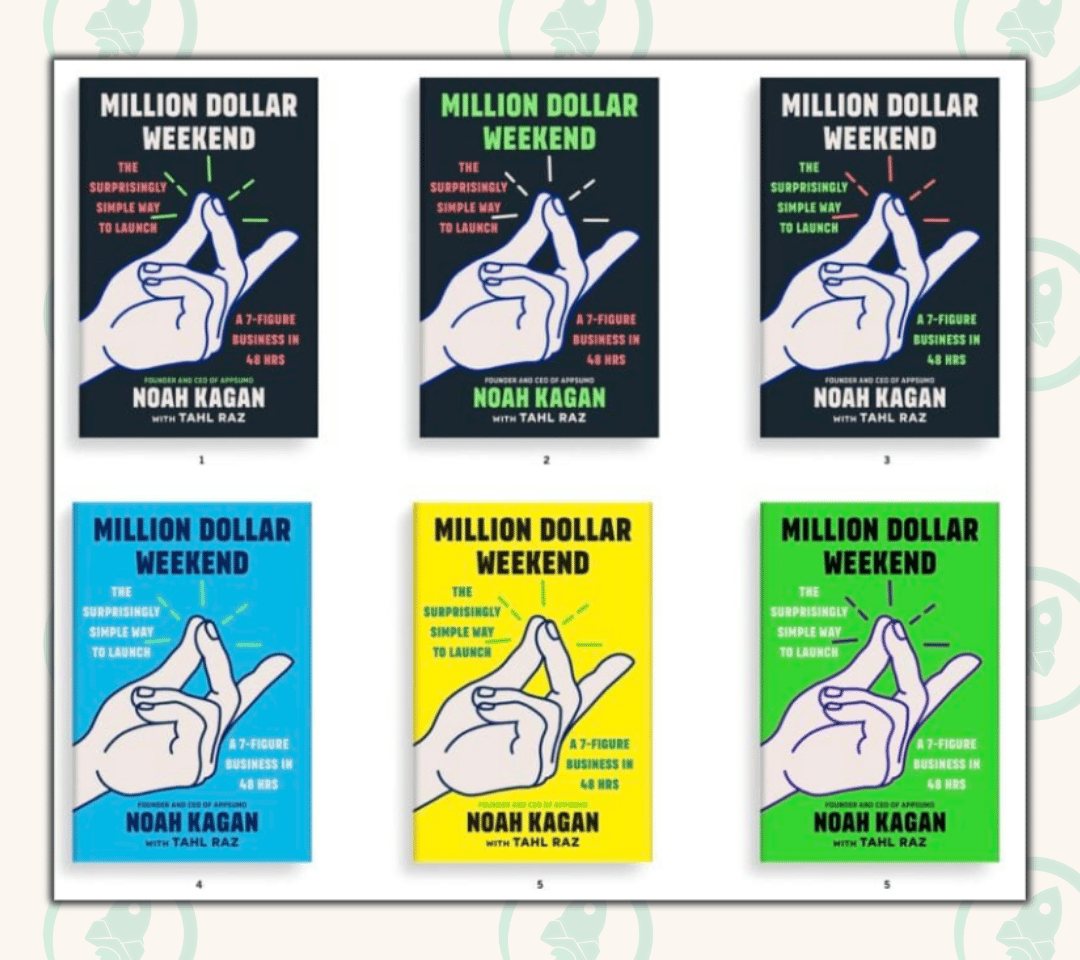
And 1M+ impressions later yellow came out on top! Wait, yellow?
So why was the final version green?
Well, there wasn’t a significant difference between the two. But for 2 reasons it made sense:
Green was the color Noah had used on his blog for years.
Green really stood out when they tested mockups of the book in a store bookshelf and on Amazon. It was so different to every other book - especially business books.
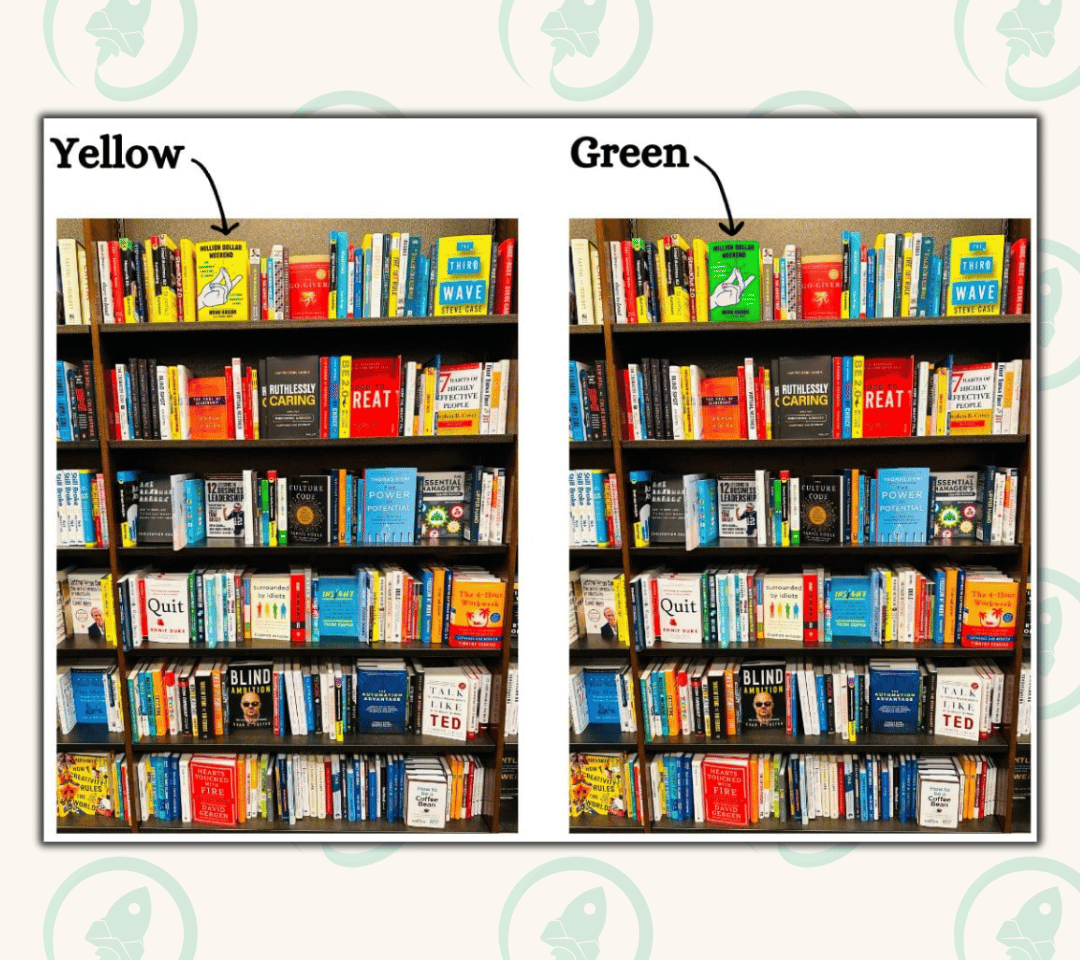
The last step to finetune this was to decide on the size of the font used.
So what did Noah do?
Tried to look at the book from afar.
Could people walking by the store see the book title?
The answer was no - so they made it bigger.
And just like that, MDW as we know it was born.
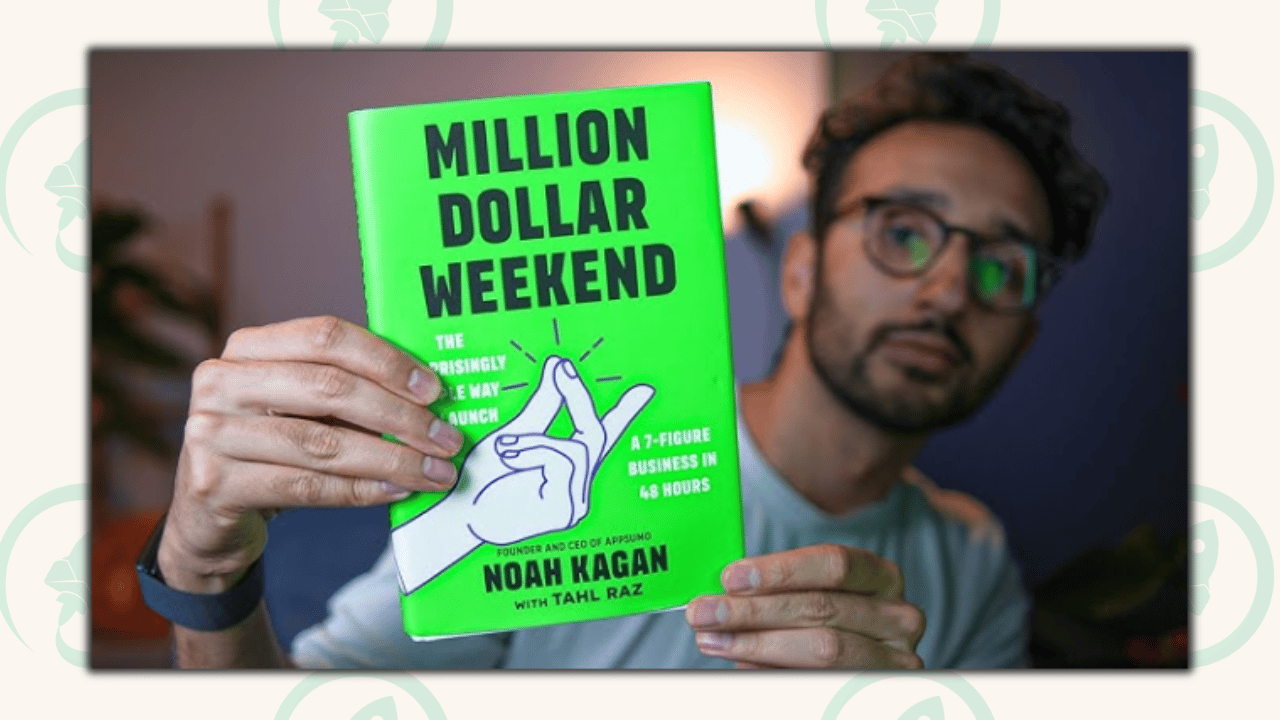
Interestingly, after launching the book and it becoming a New York Times bestseller - the team experimented with how putting “New York Times Bestseller” on the cover would effect their Facebook Ads performance. The best version increased their click-through rate by 19%!
Noah and his team are ruthless with testing. Making sure they are always optimizing reach and sales.
Tactics to replicate MDW’s success
Put effort into graphics 🎨
One thing that worked really well for the launch was including easy-to-understand graphics in their social content.
One style of graphic that worked particularly well was when it called people out. I don’t mean like for a fight.
But when Noah and his team posted content that called out “Wantapreneurs”.
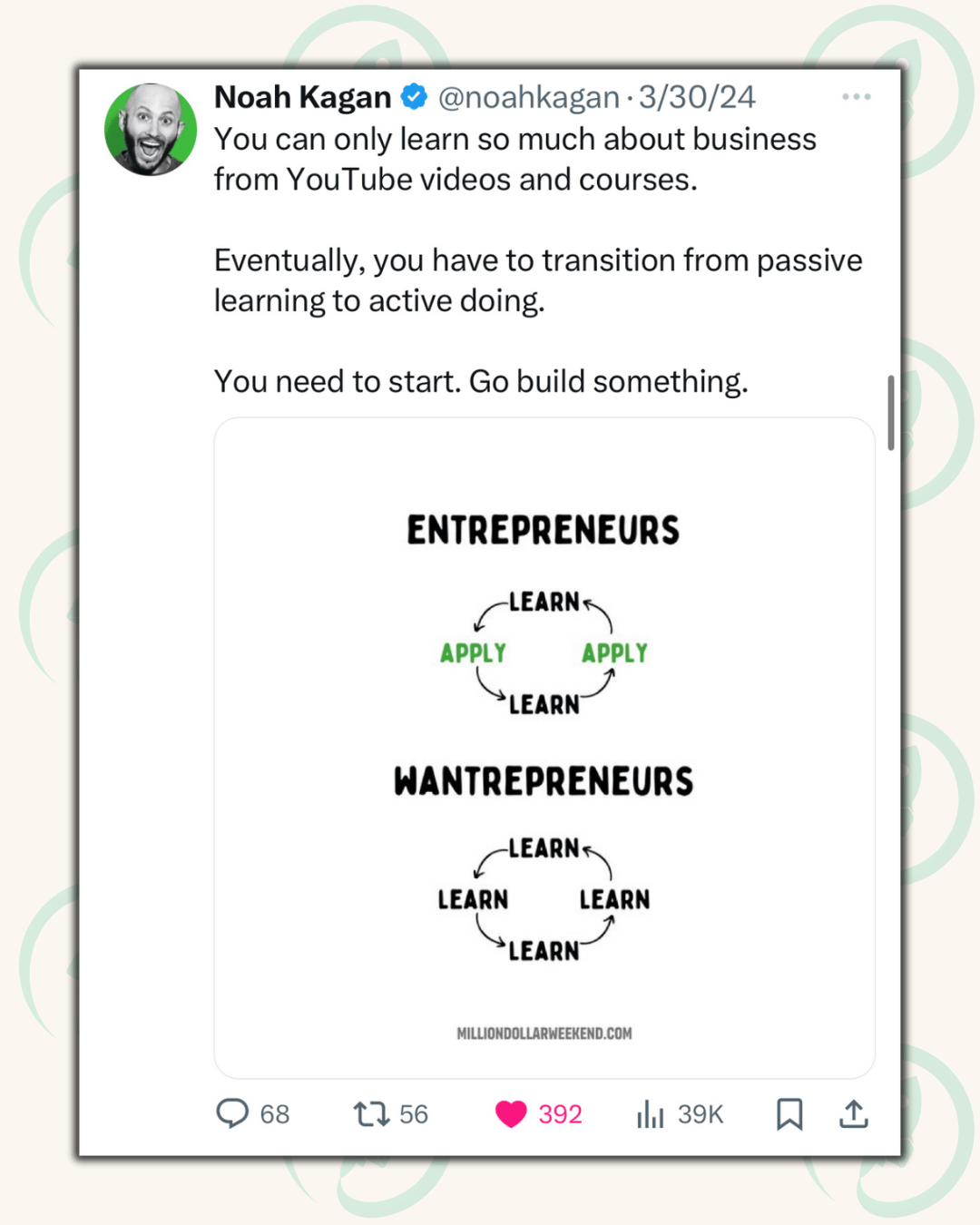
Another type of visual that worked well for the launch was a young photo of Noah attached to a story of growth - people love seeing progress as it makes hard things seem achievable.
Well-crafted graphics can be awesome for your reach. They work so well for a few reasons:
People are highly visual: A lot of how we understand the world comes from what we see. Your followers are no exception. Graphics are more likely to grab people’s attention and keep it.
It’s quicker to understand: A well-put-together visualization of a complex topic is much easier and quicker to understand than text.
Visuals are memorable: Graphics and visualizations can be used to create a strong visual identity and help your followers remember what you are saying.
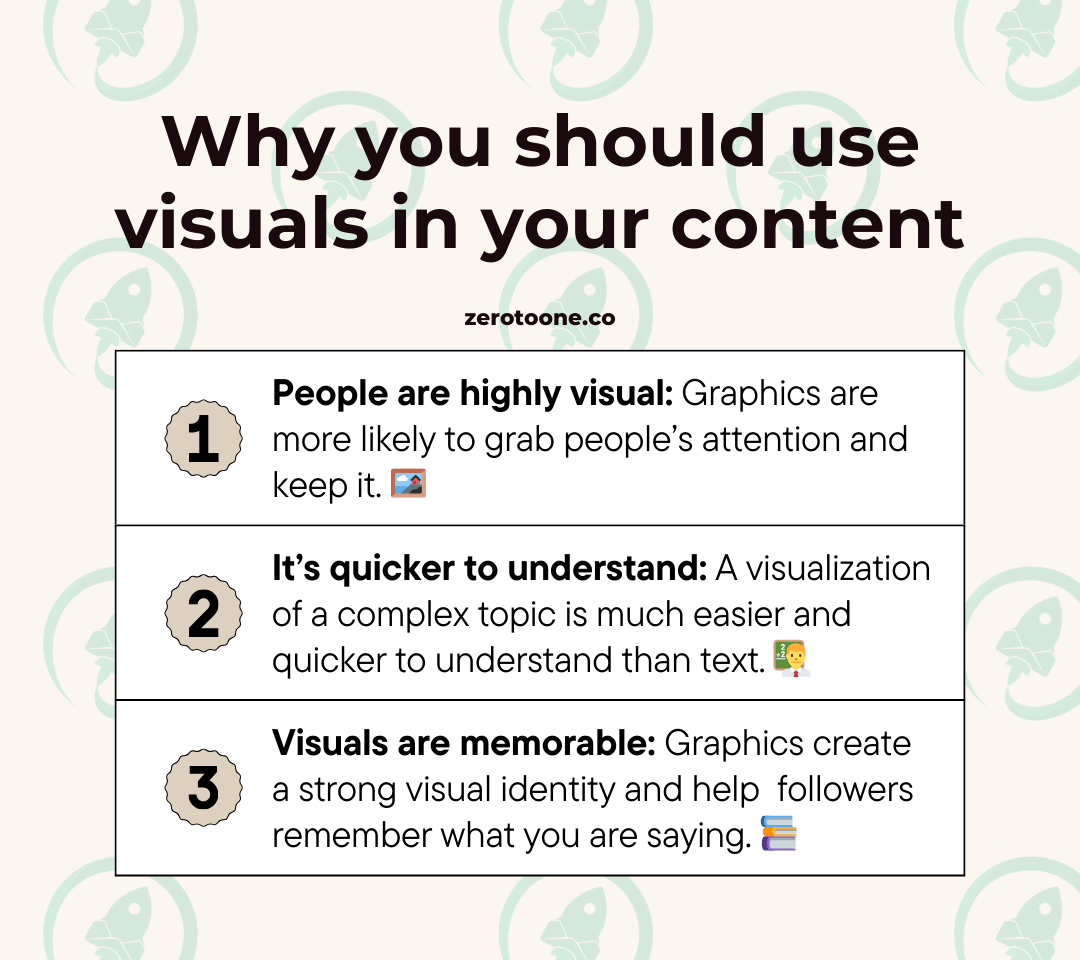
See what I did there? 😉
Another thing that the team did which worked really well for traffic and ultimately sales, was putting the URL to MDW in the visual.
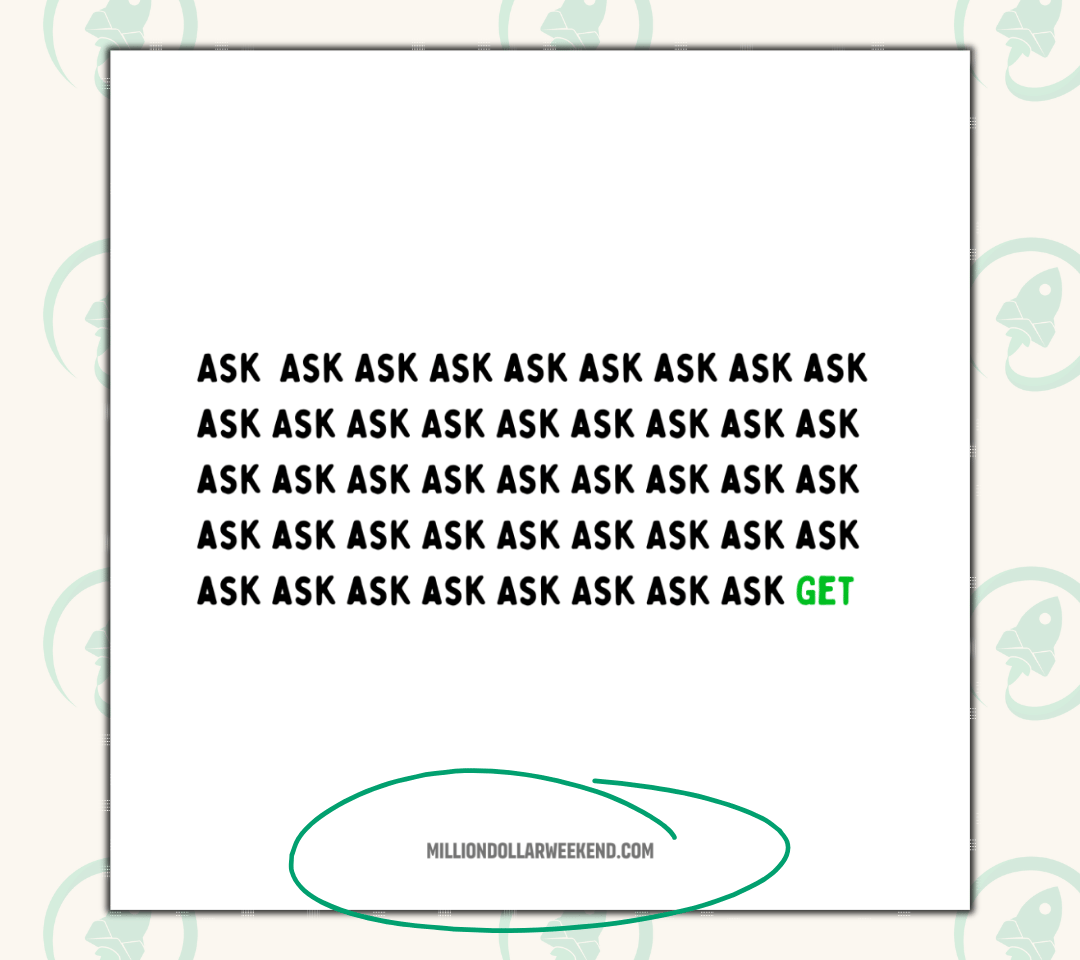
Make creators feel special 👸
I’ve talked a lot about creators before.
I think they can be really awesome for your business if you are strategic about working with them.
Creators are by all measures Connectors - the people who share what they love with anyone that will listen to them.
And creators have a lot of people who will listen to them.
Almost the perfect blend for a Tipping Point in your GTM strategy.
Noah, being a creator himself, understood this.
And he took advantage of it.
Noah and his team sent VIP boxes of MDW to creators who had relevant social media followings.
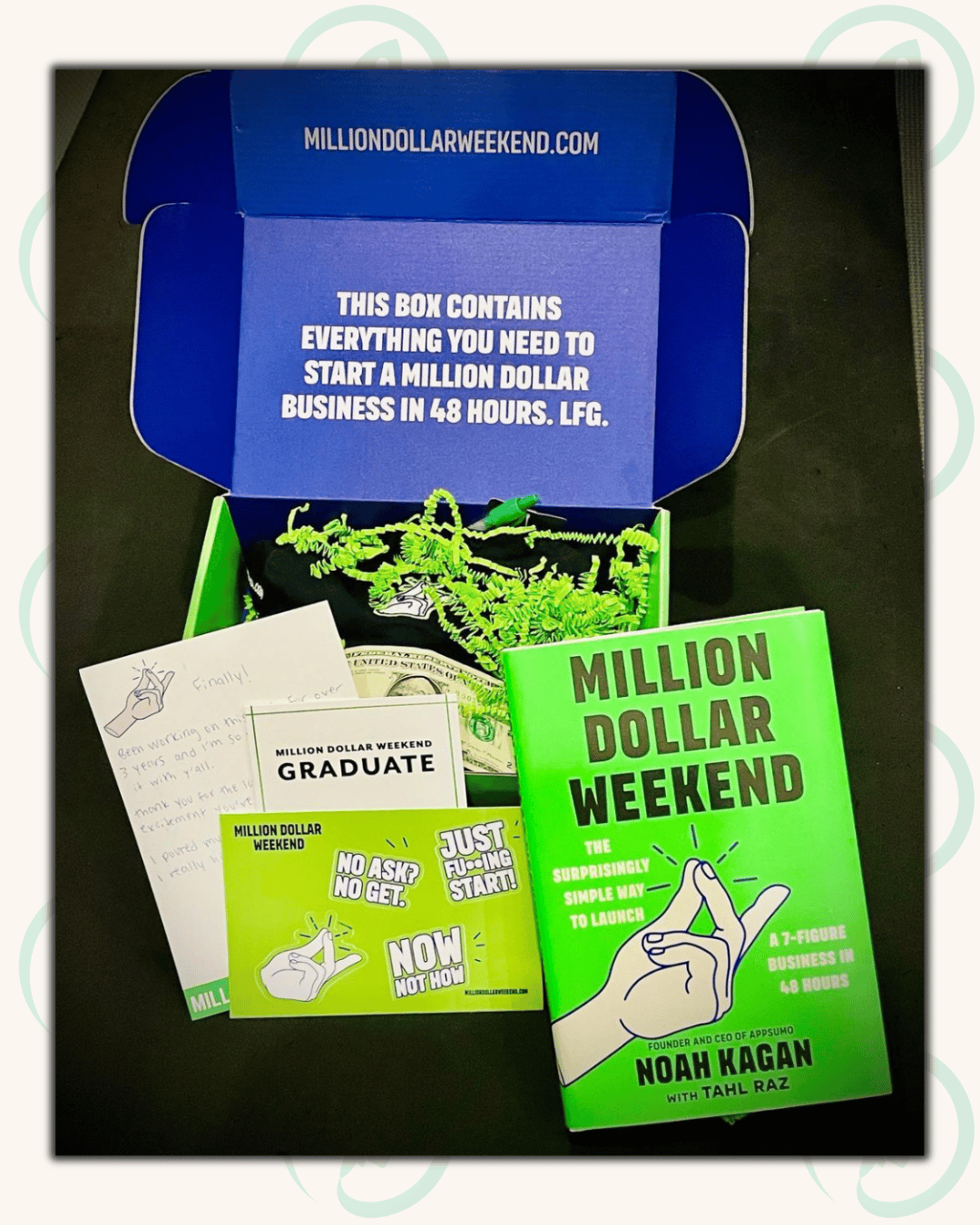
This achieved 2 key things:
Made the influencers feel special.
Gave them something interesting to post about.
This is an awesome combo.
Making influencers feel special instantly makes them want to share your product.
And giving them Insta-worthy packaging to post with gives them the material they can use to share how special they feel - which makes them feel even more special.
Repurpose content that works 🔄
Creating content for every social media platform can often feel overwhelming - trust me, I know.
Noah and his team simplified the process by repurposing content that worked on other platforms.
I’ve talked about this before in my deep dive into Stan - but there’s a really cool way to think about content creation that makes it feel more approachable.
Think about content as a pyramid you can systematize:
Core content: This is generally a longer piece of content, i.e., a YouTube video, podcast, or newsletter.
Short-form content: Core content can then be cut up and repurposed into Shorts/Reels/TikToks.
Snippets: Core and short-form content can then be repurposed as LinkedIn and Twitter/X posts or even an Instagram story.
Using this content pyramid method, you can create multiple pieces of content in one sitting. Reducing the time required and increasing total reach.
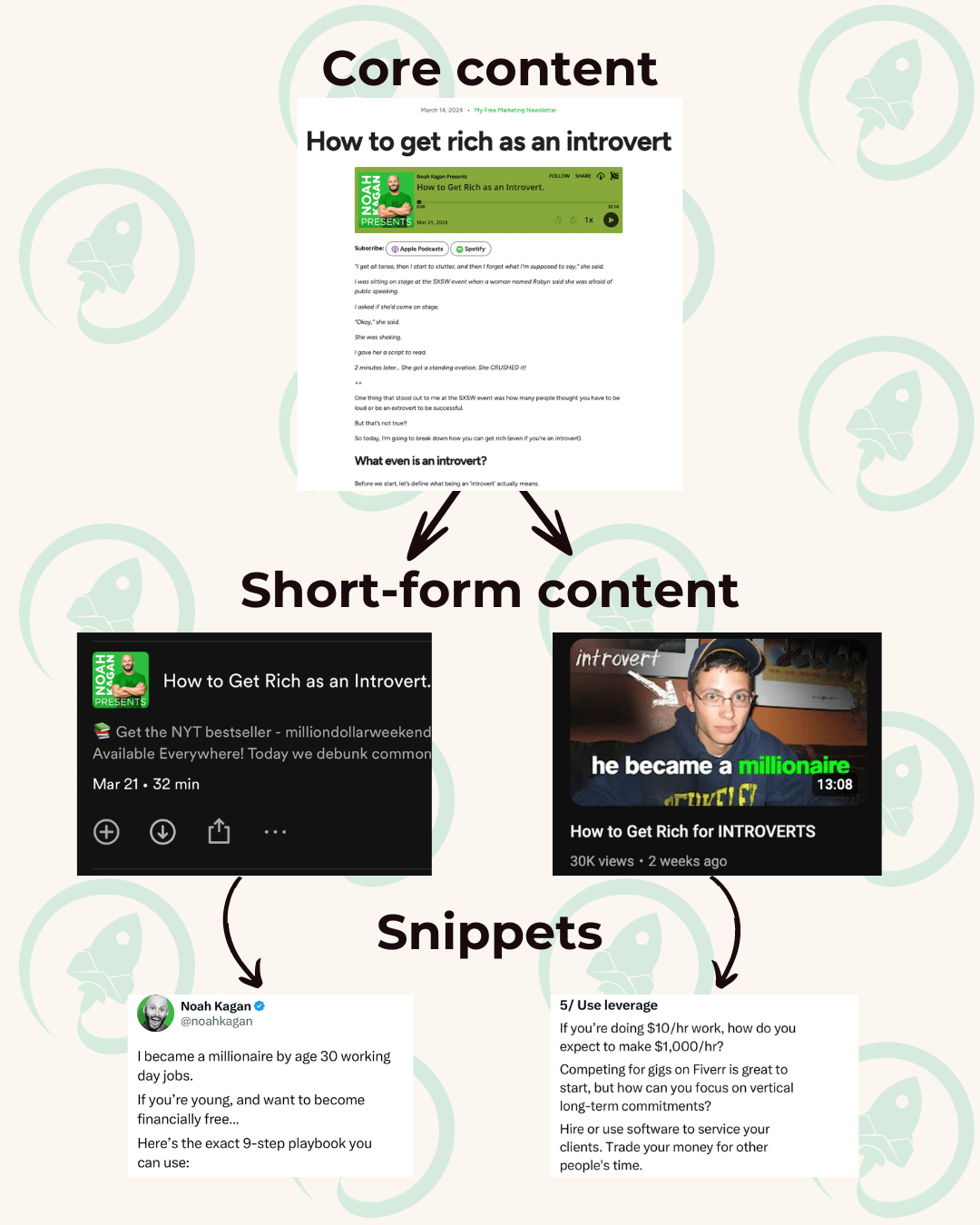
Noah and team did this excellently.
Repurposing plenty of content, with a typical pyramid being: emails into blogs into Twitter and LinkedIn posts.
Noah also repurposed content horizontally, testing the same content on similar platforms - for example Twitter/X to YouTube Community.
A trend that I’ve seen recently starting to gain a lot of traction with creators like Jay Clouse.

And it worked super well for Noah as well, with some repurposed Tweets getting over 4k likes on YouTube Community.
Don’t overcomplicate content creation. You can create one awesome long-form piece of content and chop it up into multiple pieces - making them relevant for specific platforms.
Use your followers for content ideation 📢
When you’re a content creator, followers are the users of your business.
And what’s the best way to improve and direct your product?
Speaking to your customers.
Building a business is ultimately building a solution for your customers. So you need to make sure they love and use it.
The same goes for content.
Speak to your followers - What do they want to see you post more of? Do they want to see you expand into different areas?
You’ll never know if you never ask.
But don’t stop here.
Actually listen to your followers. Use what they say.
Not only will this make your content more relevant and likely to resonate with people.
But it’ll also make your followers feel heard and a part of your journey.
You’ll build a loyal following.
Noah did this in a few ways.
One was to ask his email list which podcasts he should be on - the podcasts they listened to would likely have other potential fans.
Another way was to look through Noah’s Instagram DMs to find stories about people’s experiences reading MDW.
This not only gave Noah more content to post, but gave him a ton of social validation to take advantage of.
For The Zero to One, it’s been your host, Sheldon.
Speak soon and stay awesome!


